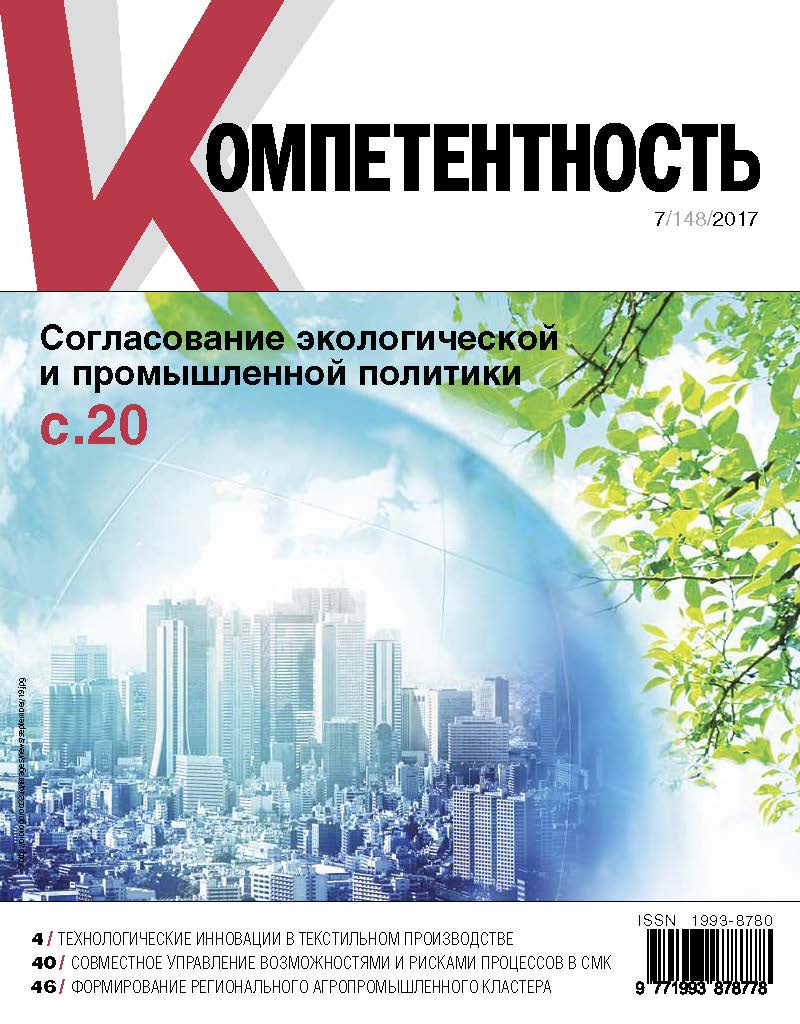Journal Kompetentnost': 7 / 148 / 2017
Articles
-
1
Technological Innovations of Textile Production
Authors: V.V. Grushnikova, Researcher, Russian Institute for Scientific and Technical Information Russian Academy of Sciences, Moscow, Russia, viniti@mach04.ru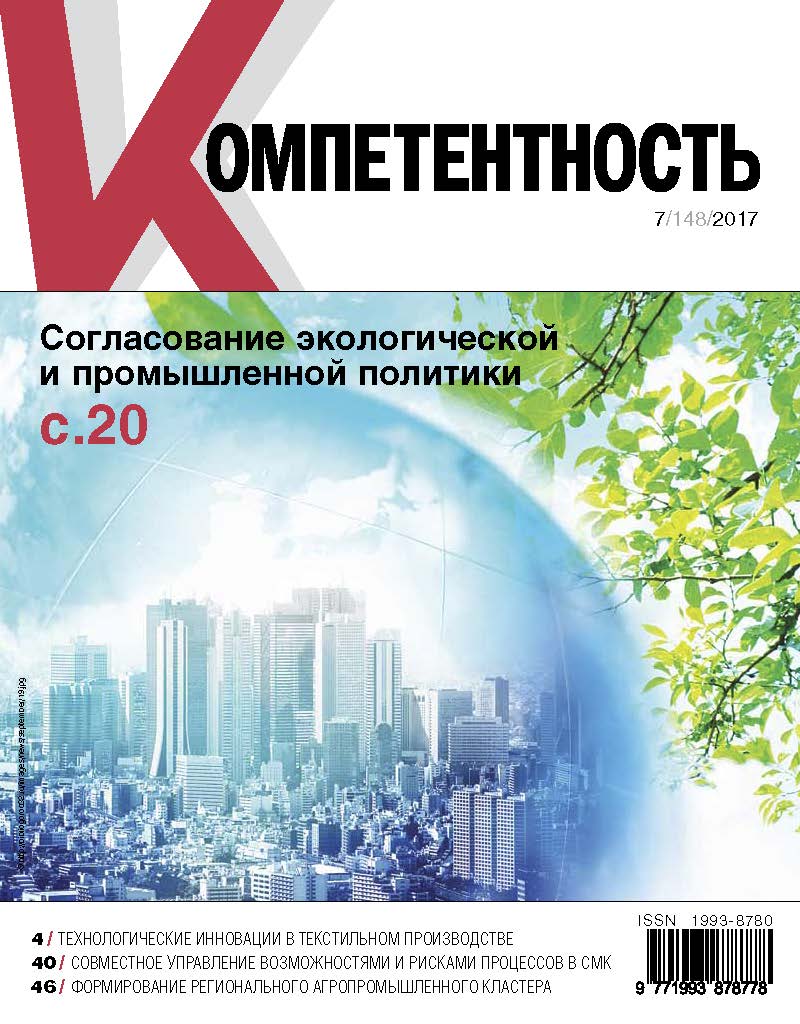 Entering the fourth generation industrial revolution era, humanity is increasingly
Entering the fourth generation industrial revolution era, humanity is increasingly
looking for the ways of low-cost, energy-efficient and environmentally friendly
production of all necessary for the life and functioning of industrial, housing and
communal, logistics, etc. processes. Progressive growth of information on the
development and implementation of new equipment and equipment modernization,
patentable technical solutions confirms this. Leaders are methods and devices based on
advanced methods of modern information digital technologies and artificial intelligence
that allow to optimize technological processes with minimal systemic and random
errors of the human factor — the result of natural cognition, fatigue, abstraction, aging,
etc. reasons. I have considered progressive, expecting mass use promising innovations,
using the example of textile production technologies.
Download -
2
The Main Participants in the Development Process of the Best Available Techniques
Authors: Dr. D.О. Skobelev, Head, Bureau of BAT, Moscow, Russia, csmv@vniismt.ruDr. А.Yu. Sanzharovskiy, Researcher, FSAB «Research Institute «Environmental Industrial Policy Center», Mytishchi, Moscow Region, Russia, a.sanzharovskiy@eipc.centerК.А. Bagrintseva, Engineer, FSUE Russian Scientific Research Institute for Standardization of Materials and Technologies, Moscow, Russia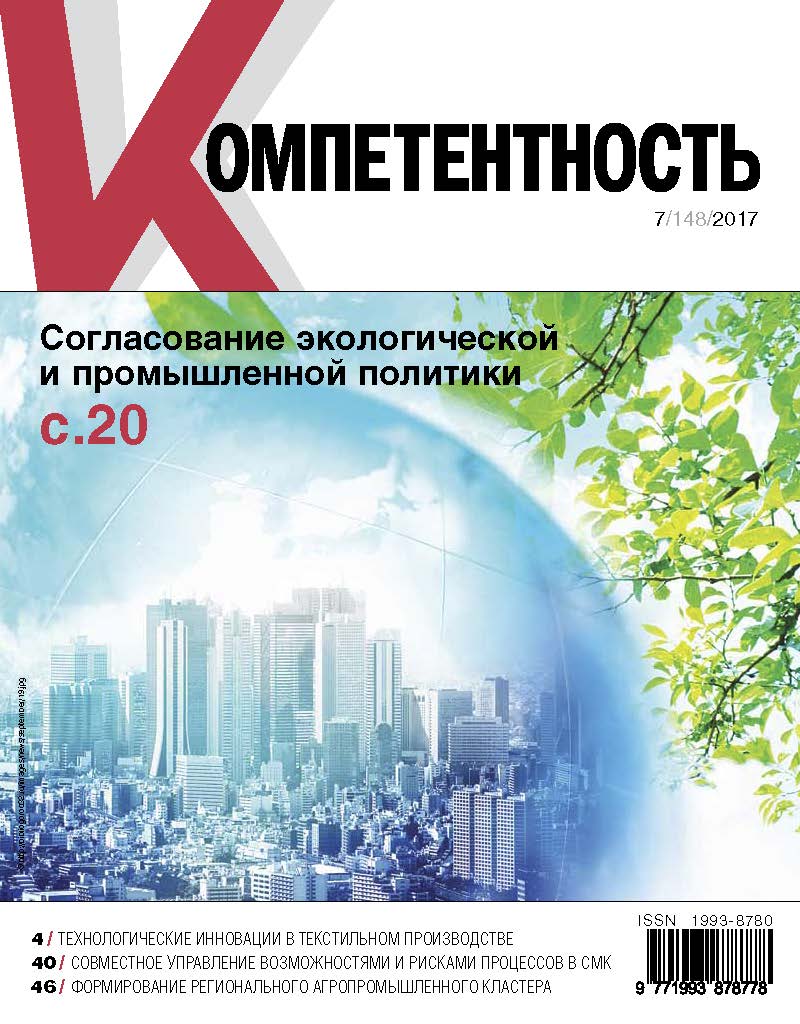 Currently, the best available techniques have proved to be an effective tool for
Currently, the best available techniques have proved to be an effective tool for
reducing the negative impact on the environment. We have examined the new
institutional structure created in Russia for a phased transition to BAT. It includes all
stakeholders — representatives of government, industry, industry associations, science
and non-governmental organizations, etc. We have also analyzed the principles of
developing information and technical reference books on BAT — the main elements
of the new system for state regulation based on the best available techniques. Today,
the issue of the BAT directories enforcement in the country is under consideration.
However, we are confident that these documents will occupy an important place in the
system of new state regulation based on the principles of the best available techniques.
Download -
3
Quasidetermined Model of Thermal Phenomena in Drilling Composite Materials
Authors: Assoc. Prof. Dr. S.V. Vantsov, Associate Professor, Department of Instrumentation Technology, Moscow Aviation Institute, Moscow, Russia, vancov@medpractika.ruZve Maung Maung, Postgraduate, Moscow Aviation Institute, Moscow, Russia, zwemaungmaung@gmail.com We have found that when processing composite materials, the temperature of the tool
We have found that when processing composite materials, the temperature of the tool
in the cutting zone can reach values at which the binder material passes from a solid to
a plastic state. This leads to a significant deterioration of the hole internal surface and,
as a consequence, to the defect of the product. Production of printed circuit boards is
one of the industries for which the assessment of thermal phenomena in the processing
of composite materials is critical. Our quasideterministic model makes it possible to
calculate the temperature in the drilling zone in a wide range of physical parameters
of the composite materials, drill characteristics and processing regimes in advance.
The determination of this temperature makes it possible, at the production preparation
stage, to determine the permissible resource of the cutting tool and thereby to avoid the
appearance of a defect.
Download -
4
Co-ordination of Environmental and Industrial Policies: Global Indicators
Authors: Dr. G.S. Nikitin, First Deputy Minister of Industry and Trade of Russia, Moscow, RussiaDr. V.S. Os’makov, Deputy Minister of Industry and Trade of Russia, Moscow, RussiaDr. D.О. Skobelev, Head, Bureau of BAT, Moscow, Russia, csmv@vniismt.ru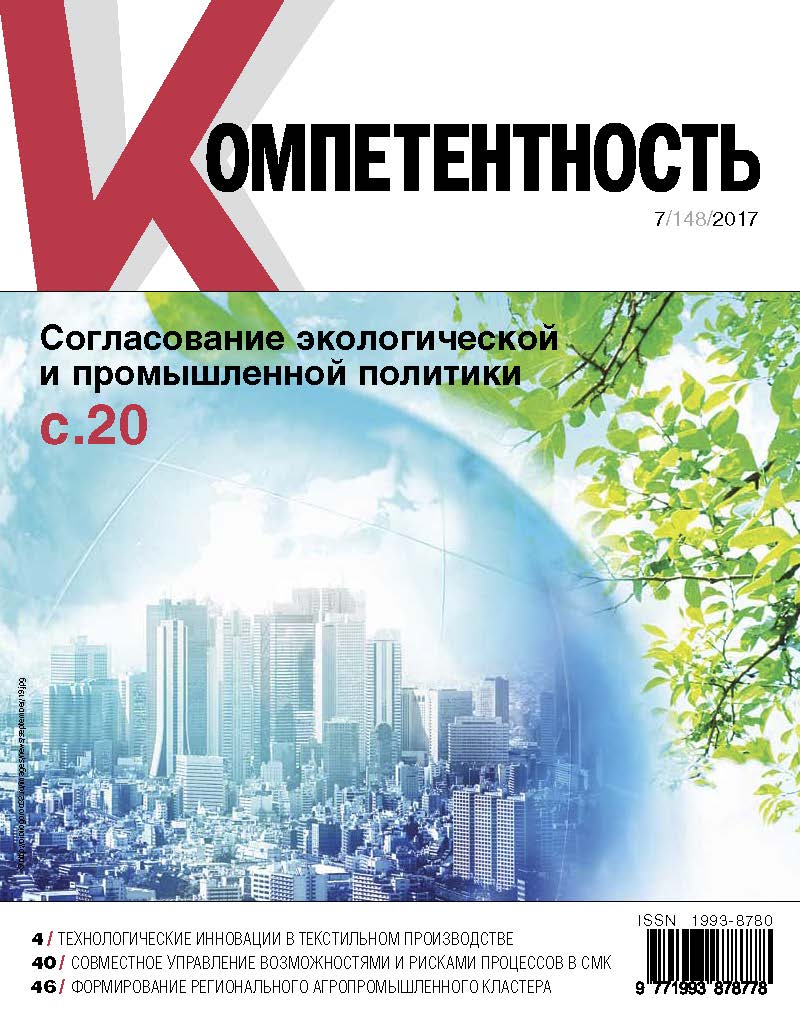 We have introduced a system of state regulation in the field of environmental
We have introduced a system of state regulation in the field of environmental
protection, working on the basis of the best available techniques. This system establishes
environmental requirements for industrial enterprises, which are based on complex
indicators. Owing to the approaches developed by the OECD in assessing the state’s
environmental policy, we have concluded that one of the main criteria for the success
of state regulation in the field of environmental protection is its consistency with
industrial policy implemented in the state. To maintain sustainable development, it is
necessary to establish an optimal balance between the demands of ecologists and the
needs of industry. The indicators discussed in this article help determine the strengths
and weaknesses of the current regulation and set the right vector for the development
of the state policy in the field of environmental protection.
Download -
5
Sovereign Wealth of Russia: Save or Spend?
Authors: Dr. A.A. Ivanov, Associate Professor, REU Plekhanov, Moscow, RussiaDr. M.V. Danilina, Associate Professor, Finance University, REU Plekhanov, Moscow, RussiaDr. S.Yu. Eroshkin, Associate Professor, REU Plekhanov, Moscow, Russia, Eroshkin.SY@rea.ruDr. О. I. Kulygina, Associate Professor of Department, REU Plekhanov, Moscow, RussiaDr. S.P. Ivanova, Associate Professor of Department, REU Plekhanov, Moscow, RussiaDr. D.К. Balakhanovа, Associate Professor of Department, REU Plekhanov, Moscow, Russia Prof.Dr. L.А. Danchenok, Professor, Dean of Department, REU Plekhanov, Moscow, Russia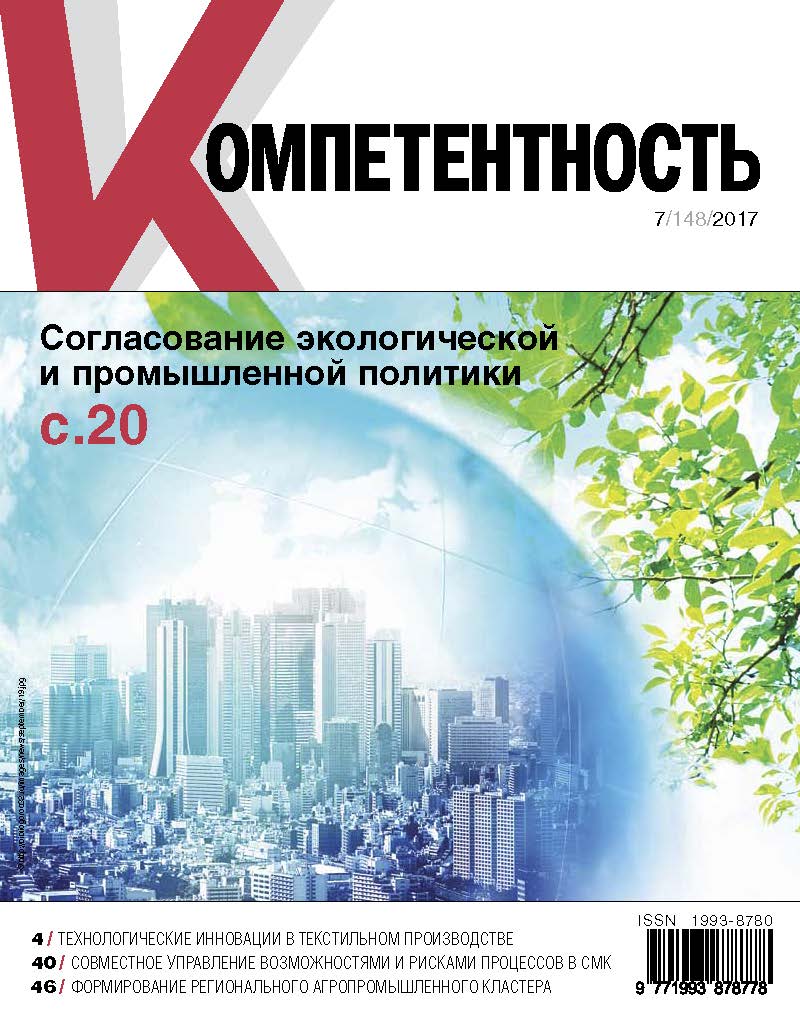 Many analysts warn today about the possibility of the exhaustion and termination
Many analysts warn today about the possibility of the exhaustion and termination
of the Reserve Fund and the National Welfare Fund operation. We have devoted our
research to possible solutions to the problem. We consider that the National Welfare
Fund should not be spent completely. It is necessary to look for ways to invest the
reserves of these funds more efficiently. At present, the investment of the National
Welfare Fund in infrastructure projects is not effective enough, so it requires the search
for new solutions.
To solve the problem of financing the budget deficit, it is necessary to use a variant
of reducing budget expenditures. If possible, do not cut those that can further increase
the scale of the economic downturn, and consider the option of raising funds from other
funds.
We sought to identify the main stages in the development of theory and practice
of project management. We have taken into account the project management in
restaurant industry and trade.
This paper presents the basis for interaction of project participants and types of
project management offices in the restaurant business.
In the article we have summarized the various options for project management,
which are found in the Russian practice of conducting restaurant business and trade.
Results of the study can be used in the selection of project portfolio management
schemes.
Download -
6
Features of Transition to GOST R ISO 9001–2015 (ISO 9001: 2015)
Authors: Dr. А.G. Zekunov, Professor, Deputy Head of Department, Leading Expert, Academy of Standardization, Metrology and Certification (АSМС), Moscow, Russia, ossk@asms.ruS.V. Babykin, Head of the Department of Scientific Research and Quality Management Systems, Academy of Standardization, Metrology and Certification (АSМС), Moscow, Russia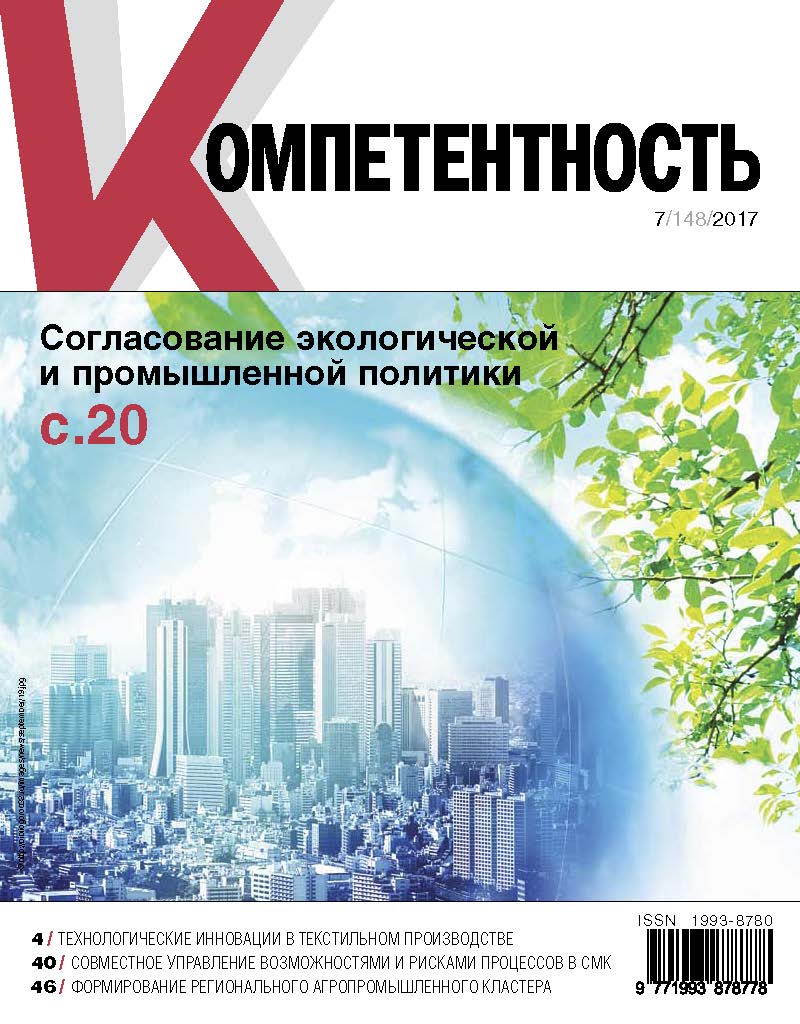 We have examined the mechanisms for the creation, development and benefits of
We have examined the mechanisms for the creation, development and benefits of
implementing a quality management system in an organization on the basis of a
comparative analysis of the requirements of ISO 9001: 2015 and GOST ISO 9001:
2008. We have analyzed the structure of the new standard and its main advantages.
These include:
(a) newly introduced terms «documented information», «knowledge of the
organization», «risk-oriented thinking»;
(b) intelligibility and simplicity of exposition;
(c) increasing the importance of leadership in the QMS;
(d) coherence of policies and objectives in the field of quality with the strategy of
the organization.
The introduction of requirements for changes at the system and production levels is
one of the goals of the new standard. This creates the basis for a business management
system that supports the strategic sustainable development of the organization.
Download -
7
Joint Management of QMS Processes’ Opportunities and Risks
Authors: Prof. Dr. V.V. Miroshnikov, Professor, Quality Management, Standardization and Metrology Department, FSBEI Bryansk State Technical University, Bryansk, Russia, v.v.miroshnikov@mail.ruAssoc. Prof. Dr. N.M. Borbats’, Associate Professor, Quality Management, Standardization and Metrology Department, FSBEI Bryansk State Technical University, Bryansk, Russia, borbact@mail.ruAssoc. Prof. Dr. G.V. Efimova, Associate Professor, Quality Management, Standardization and Metrology Department, FSBEI Bryansk State Technical University, Bryansk, Russia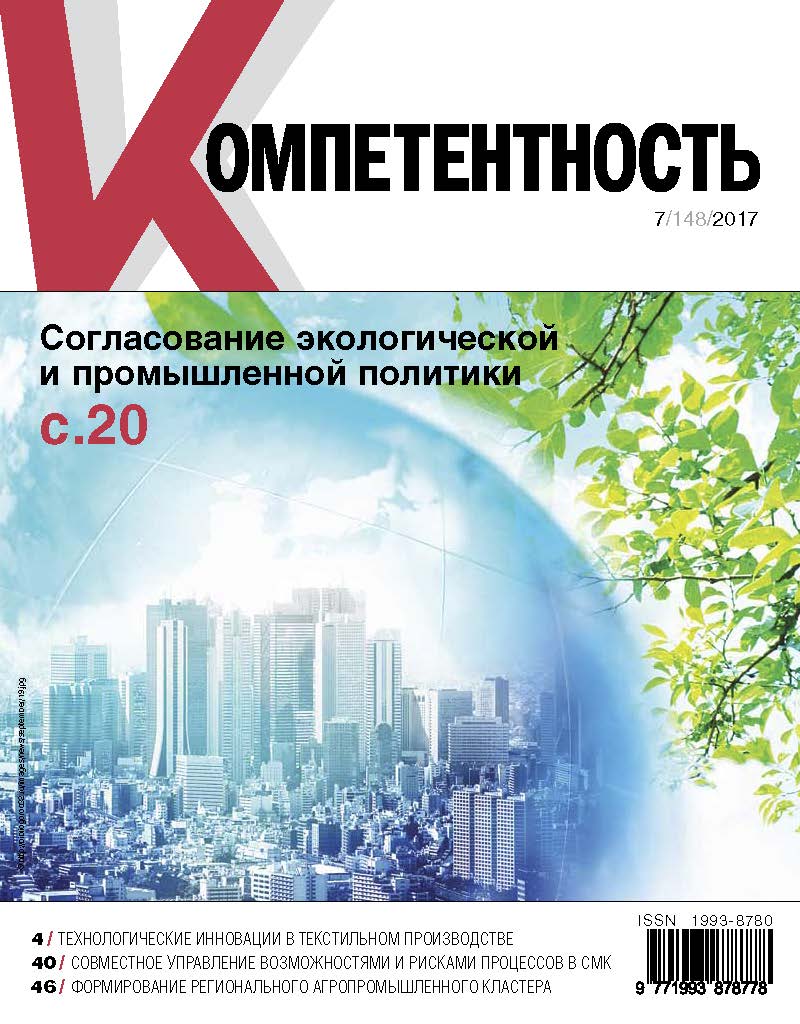 Despite the fact that future events can manifest themselves in the form of risk, and in the
Despite the fact that future events can manifest themselves in the form of risk, and in the
form of opportunity (chance), almost all literature on this topic is devoted exclusively
to risks. We consider, only the decision that is taken on the basis of an analysis of both
possible failures and the success of the conceived can be scientifically justified.
The most popular among enterprises is the method of FMEA-analysis of species
and technical systems failures consequences. At the same time it is desirable to apply
FMEA-analysis in the field of management. To manage the quality of QMS products
and processes, we recommend using a comprehensive multilevel FMEA risk analysis
and offer for this purpose a methodology for assessing opportunities using a matrix
of opportunities levels and risks.
Download -
8
Formation of the Regional Agro-industrial Cluster
Authors: Prof. Dr. T.A. Salimova, Professor, Dean, Head of Department, Ogarev Mordovian State University, Saransk, Republic of Mordovia, Russia, t.a.salimova@econom.mrsu.ruProf. Dr. N.D. Gus'kova, Professor, Head of Department, Ogarev Mordovian State University, Saransk, Republic of Mordovia, Russia, menegment310@mail.ruYu.M. Sapego, Deputy Head, Voronezh Branch, Academy of Standardization, Metrology and Certification (training), Voronezh, Russia, akd@asms-vrn.ru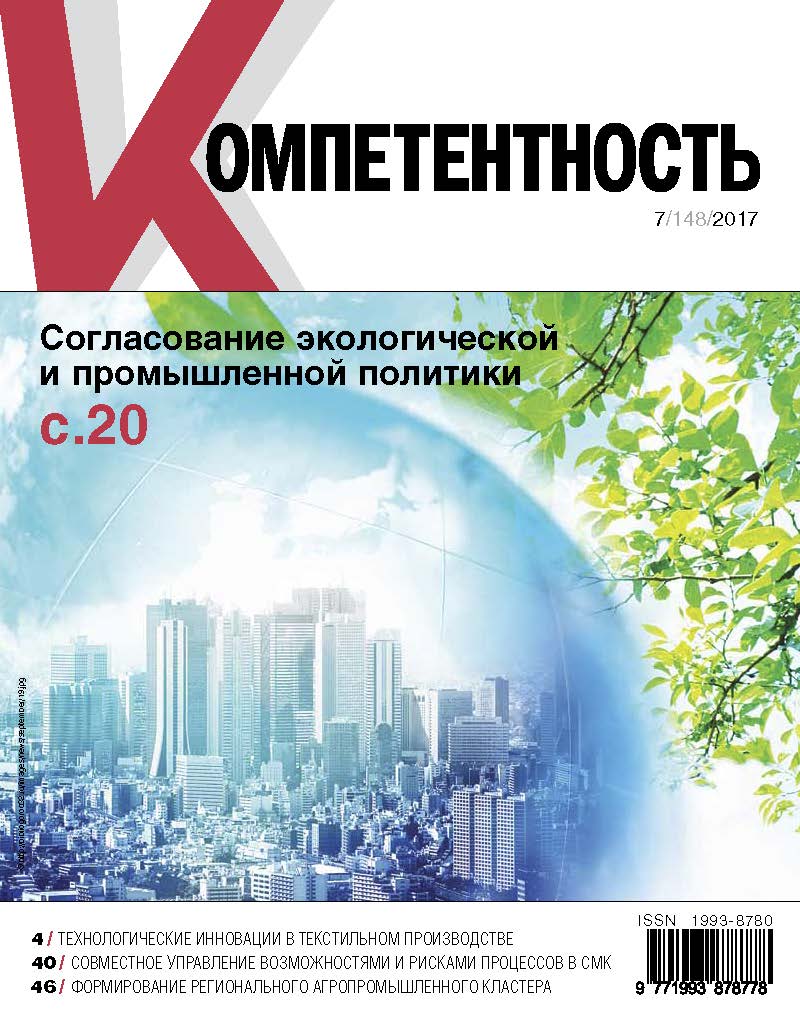 The policy of import substitution, WTO requirements, the EEU, political sanctions
The policy of import substitution, WTO requirements, the EEU, political sanctions
and the instability of financial markets require improving management mechanisms
and integration of enterprises in the agro-industrial sector. We consider, that the
highest competitiveness of production and the efficiency of integration processes are
observed in cluster formations.
We have proposed a project for forming a regional agro-industrial cluster in the
Voronezh Region on the basis of SWOT analysis, the application of expert and statistical
methods for identifying regional clusters and a regional agro-industrial cluster based on
a system approach to quality management and product safety. We have developed the
main stages of forming and improving the quality and safety management system of the
considered regional agro-industrial cluster.
Also it is defined that the structure and the main functions of its management
body — the Coordination Center for Quality and Safety of Products.
We suppose that the implementation of these approaches will result in achieving
the level of sustainable development of the region, its economic growth, improving the
population’s life quality, improving the state of the environment, ensuring quality and
safety of food products.
Download



